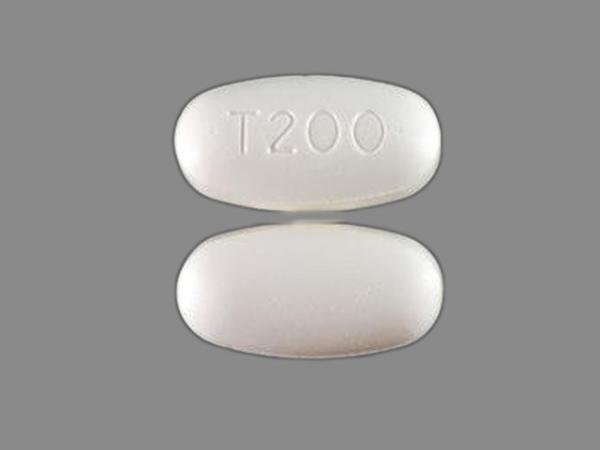Etravirine Dosage
Medically reviewed by Drugs.com. Last updated on Apr 4, 2025.
Applies to the following strengths: 100 mg; 200 mg; 25 mg
Usual Adult Dose for:
Usual Pediatric Dose for:
Additional dosage information:
Usual Adult Dose for HIV Infection
200 mg orally twice a day after a meal
Comments:
- The same dosage is recommended for adult and pregnant patients.
Use: In combination with other antiretroviral agents, for the treatment of HIV-1 infection in antiretroviral therapy-experienced patients
Usual Pediatric Dose for HIV Infection
2 to less than 18 years:
- Weight 10 to less than 20 kg: 100 mg orally twice a day after a meal
- Weight 20 to less than 25 kg: 125 mg orally twice a day after a meal
- Weight 25 to less than 30 kg: 150 mg orally twice a day after a meal
- Weight at least 30 kg: 200 mg orally twice a day after a meal
Use: In combination with other antiretroviral agents, for the treatment of HIV-1 infection in antiretroviral therapy-experienced patients
Renal Dose Adjustments
No adjustment recommended.
Liver Dose Adjustments
Mild or moderate liver dysfunction (Child-Pugh A or B): No adjustment recommended.
Severe liver dysfunction (Child-Pugh C): Data not available
Precautions
CONTRAINDICATIONS: None
Safety and efficacy have not been established in patients younger than 2 years; this drug is not recommended for use in these patients.
Consult WARNINGS section for additional precautions.
Dialysis
Data not available
Comments:
- This drug is highly protein-bound; significant removal by dialysis is unlikely.
Other Comments
Administration advice:
- Always use in combination with other antiretroviral agents.
- Administer after a meal; the type of food does not affect drug exposure.
- Swallow tablet(s) whole with a liquid (such as water).
- For patients unable to swallow tablet(s) whole: May disperse tablet(s) in water; drink the mixture immediately; rinse the glass several times (with water, orange juice, or milk) and completely swallow each rinse to ensure the entire dose is consumed.
Storage requirements:
- Store at 25C (77F) in original bottle; excursions permitted to 15C to 30C (59F to 86F).
- Keep bottle tightly closed to protect from moisture; do not remove desiccant pouches.
Reconstitution/preparation techniques:
- To prepare dispersion:
- Place the tablet(s) in 5 mL of water, or at least enough liquid to cover the medication.
- Stir well until the water looks milky.
- Add about 15 mL of liquid; may use water but other liquids (such as orange juice or milk) may improve taste; do not place the tablet(s) in orange juice or milk without first adding water. Avoid using warm beverages (temperature above 40C [104F]) and carbonated beverages.
Patient advice:
- Read the US FDA-approved patient labeling (Patient Information).
- Do not miss doses (can result in development of resistance); take after a meal twice a day on a regular dosing schedule; do not take more or less than the prescribed dose or discontinue therapy without consulting physician.
- Swallow tablets whole with liquid (e.g., water); do not chew the tablets.
- Contact healthcare provider at once if rash develops; stop this drug and seek medical attention immediately if rash associated with fever, general malaise, fatigue, muscle/joint aches, blisters, oral lesions, conjunctivitis, facial swelling, swelling of the eyes/lips/mouth, breathing difficulty, and/or signs/symptoms of liver problems (e.g., yellowing of skin/whites of eyes, dark/tea-colored urine, pale-colored stools/bowel movements, nausea, vomiting, loss of appetite, pain/aching/sensitivity on right side below ribs) develops.
- Notify healthcare provider at once of any symptoms of infection.
Frequently asked questions
More about etravirine
- Check interactions
- Compare alternatives
- Pricing & coupons
- Reviews (2)
- Drug images
- Side effects
- During pregnancy
- Drug class: NNRTIs
- Breastfeeding
- En español
Patient resources
Other brands
Professional resources
Other brands
Related treatment guides
See also:
Further information
Always consult your healthcare provider to ensure the information displayed on this page applies to your personal circumstances.


